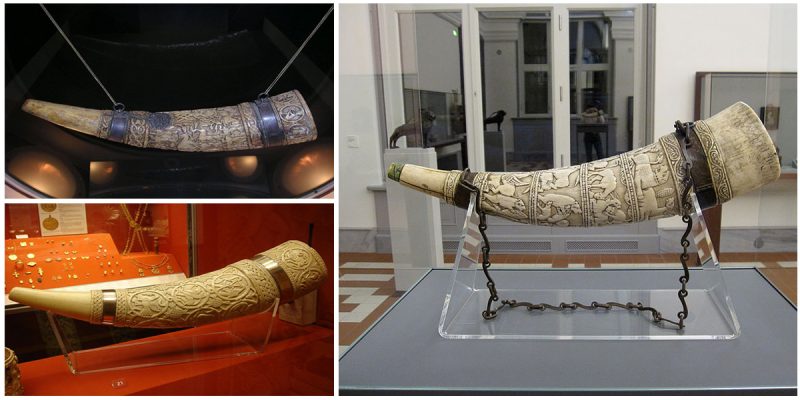Medieval European ivory horns, imported from Byzantium in the 10th century, were typically associated with royalty. These richly carved ivory hunting horns, made from elephants’ tusks or bones, were known in the past as “Oliphants”.
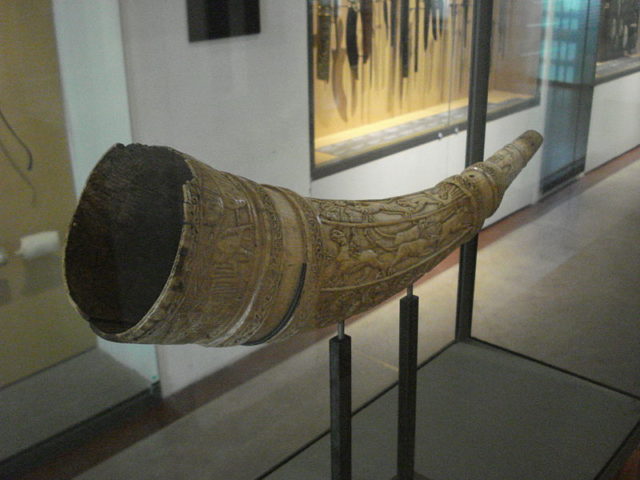
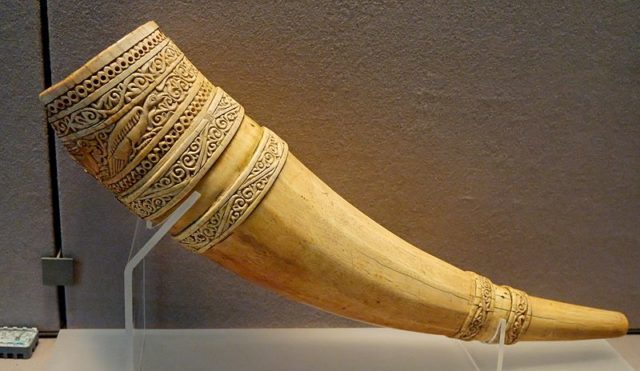
Metal construction, at first imitating natural shapes, dates as far back as the Roman Buccina (used for the announcement of night watches) and the Cornu, (an instrument in the shape of a letter ‘G’, used by the ancient Roman army for communicating orders to troops in battle), and the Danish Bronze Age Lurs, that were cast in the shape of mammoth tusks.
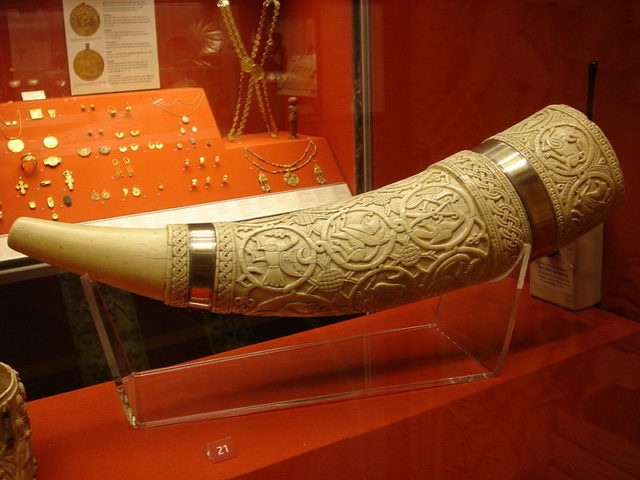
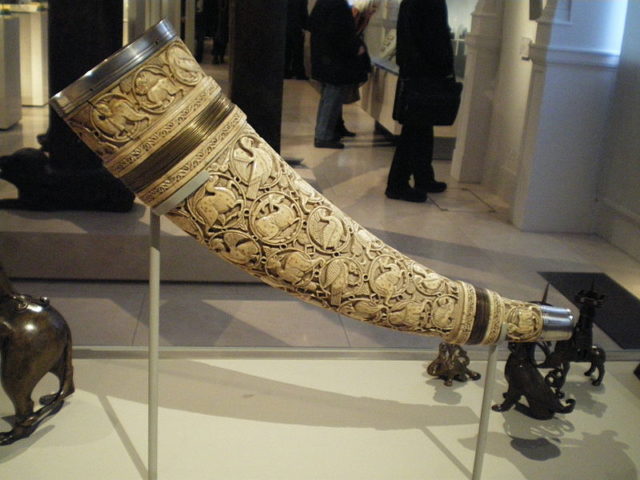
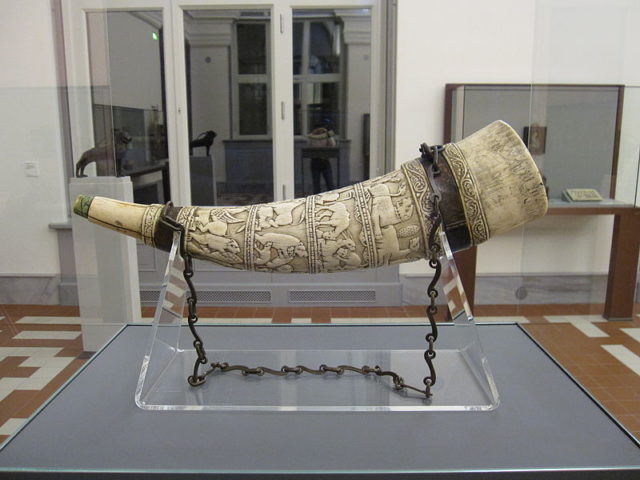
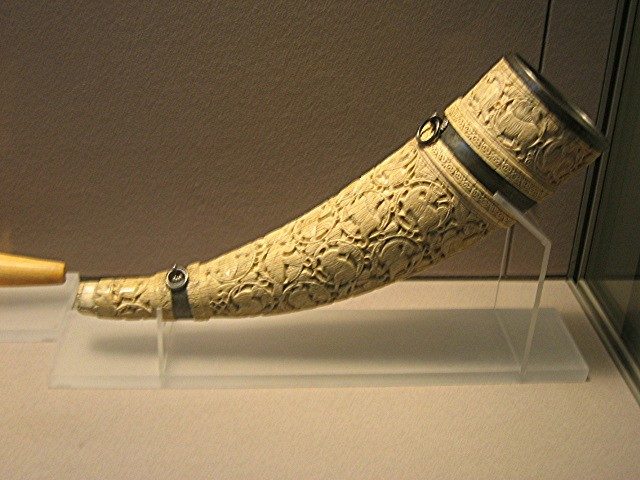

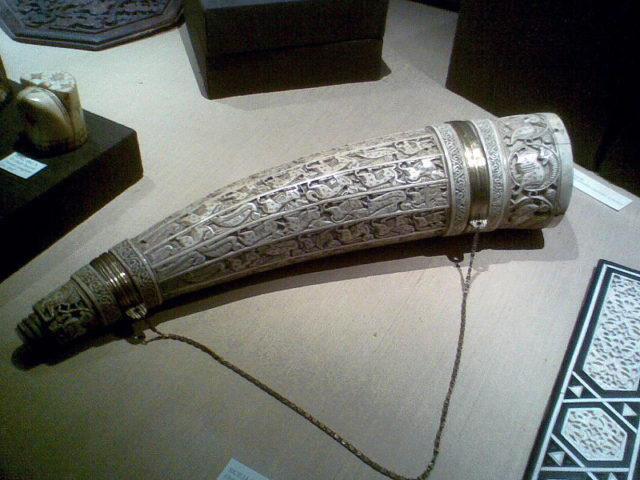
The ivory surfaces include carvings of birds, fruit, wolves and camels, as well as Latin inscriptions and portraits of warriors and hunters. The instruments are up to several feet long and were meant to hang from chains around the necks of musicians. The basis of an Oliphant’s sound is formed by a chant, dulcimer, fiddle, recorder and medieval lute.
Horn instruments were known in the Balkans, Mesopotamia, Greece, ancient Egypt, Israel (the shofar), and throughout South and West Africa and continue to be played by shepherds in Scandinavia, parts of Spain, and Sudan.
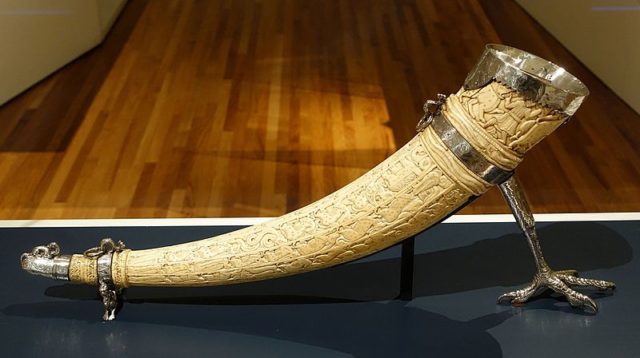
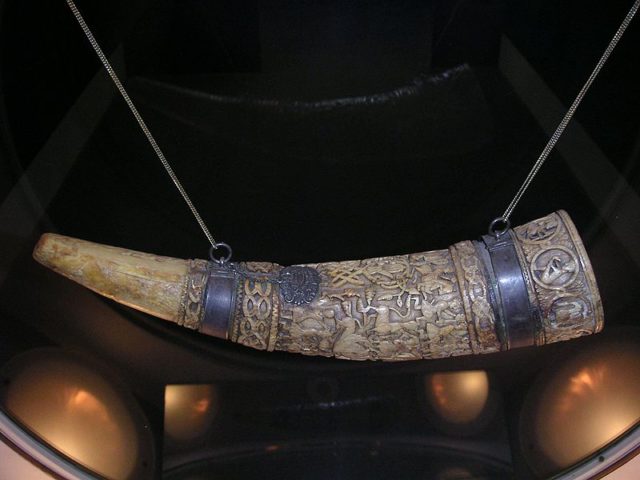
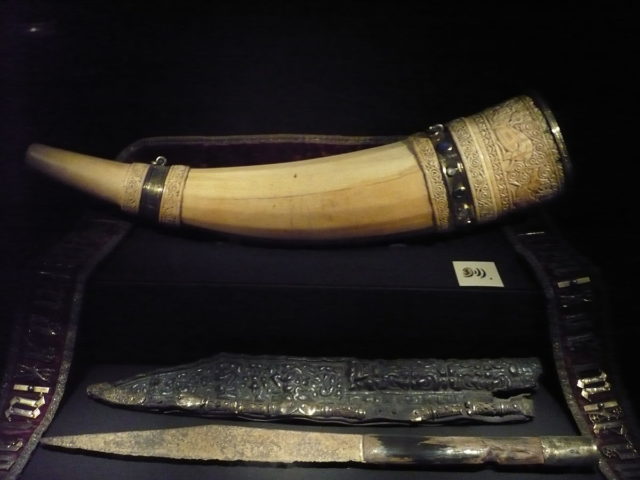
One of the most famous oliphants belonged to the legendary Frankish knight, Roland, the protagonist of The Song of Roland, the best known of the Old French epics. In The Song of Roland, Roland carries his oliphant while serving on the rearguard of Charlemagne’s army. Seeing how badly outnumbered they were when they were attacked at the Battle of Roncevaux, Olivier, Roland’s closest friend, advisor, and confidant, asked Roland to blow on his oliphant to call for help. Roland refuses, claiming that they need no help, but when almost all his men were dead, Roland finally relented, but by then, the battle was already lost.
Another famous oliphant belonged to Gaston IV (also known as “the Crusader”), viscount of Béarn from 1090 to 1131, and is now preserved in the Spanish city of Zaragossa, which he helped conquer from the Banu Hud.
